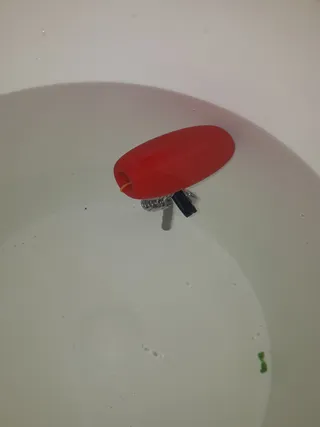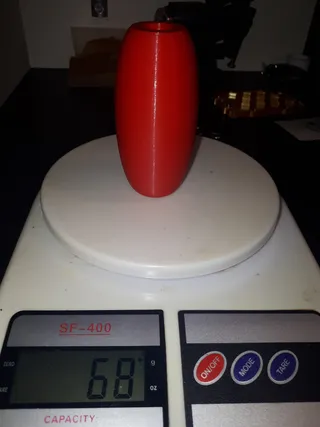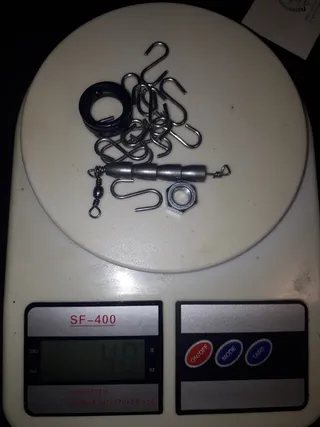I printed the 1/2" version in Prusa lipstick red PETG with 5 perimeter walls and 10% infill. I was rather disapointed when I tested the bouyancy and discovered it only was able to float 48 grams. It might work if you are using a line that floats.




I printed the 1/2" version in Prusa lipstick red PETG with 5 perimeter walls and 10% infill. I was rather disapointed when I tested the bouyancy and discovered it only was able to float 48 grams. It might work if you are using a line that floats.




I was planning on adding the float to the end of a throw bag with the hopes it would be able to support the weight of a carabiner. An average aluminum carabiner weighs anywhere from 50 to 75 grams. I was specifically looking to use a Petzl OK Screw-Lock Carabiner which weighs 70 grams. I dont think 3 wall thickness would be enough as there is the possibility it will be bouncing off rocks when used in white water.
I've updated the design, now it's a bit more chunky, should be able to support more weight. If you need it to be shock-resistant, I think TPU might be more suitable in your case, 3 walls will likely be enough to make it 100% waterproof. And please feel free to open the .shape file (if you have ShapeScript) and specify the length/diameter you need, it's kinda like a parameterized CAD file, the code is super easy to work with – just specify the dimensions you need, rope thickness, and it'll generate the model for you. Or just feel free to scale it up in the slicer before printing.
One trick to target the precise weight would be to add a filament to your slicer that has weight identical to that of fresh water, then set infill to 100%, and slice it. Then the slicer will show how much of that "water" filament it requires to print the thing, keep scaling the float up (length and/or diameter), and once it's the same or above the weight you're targeting, you should be good to go.